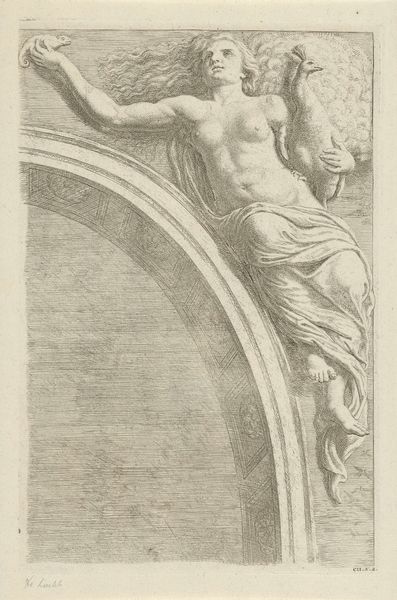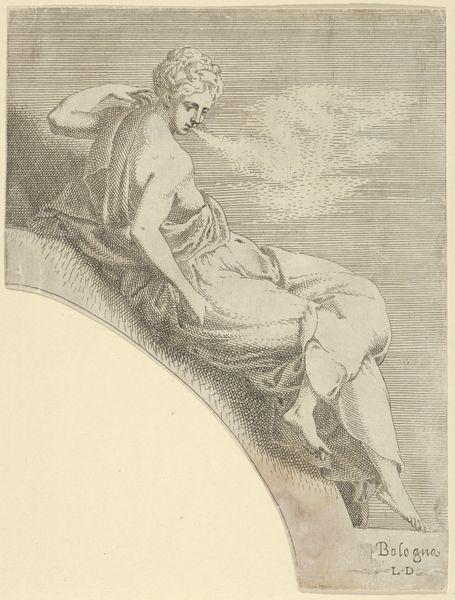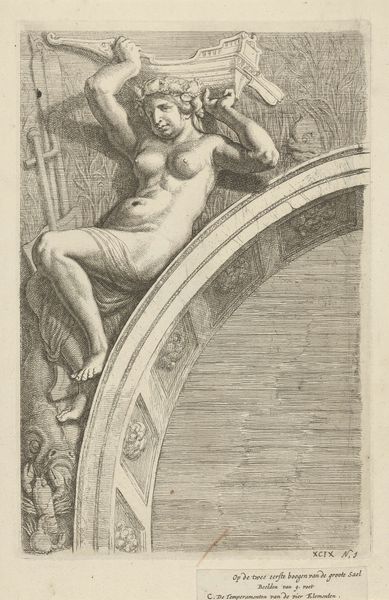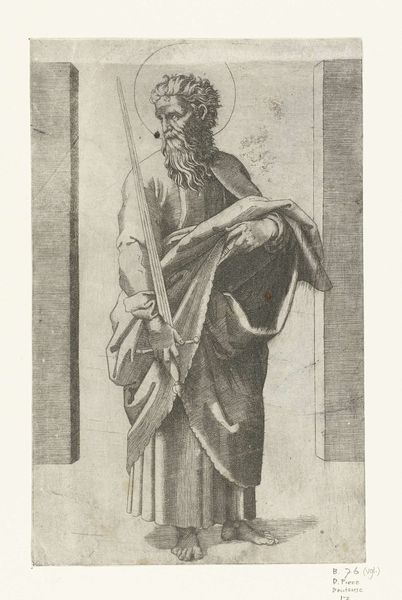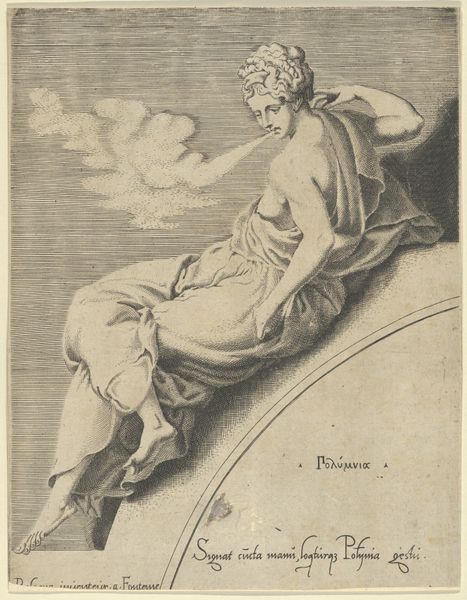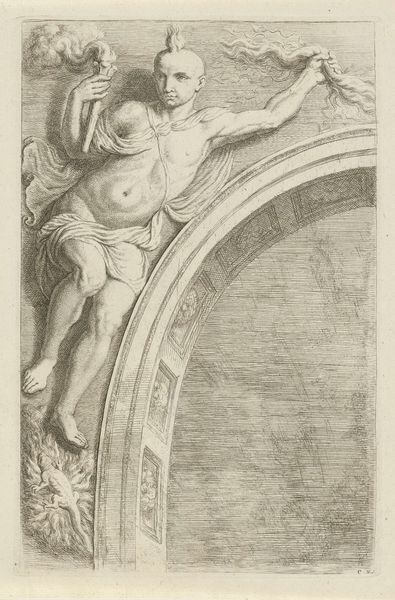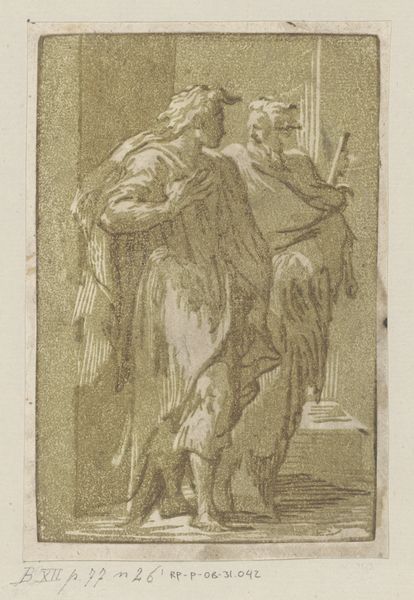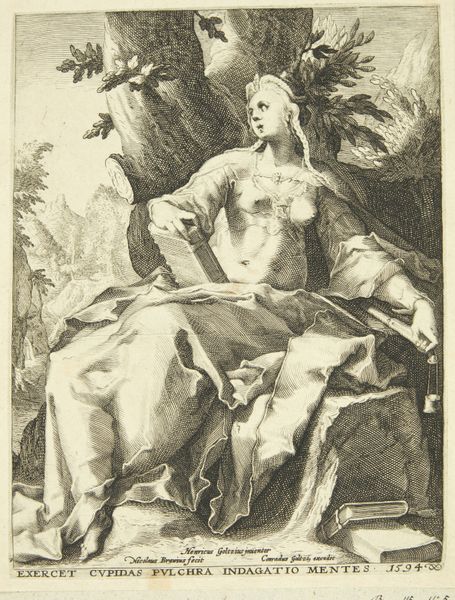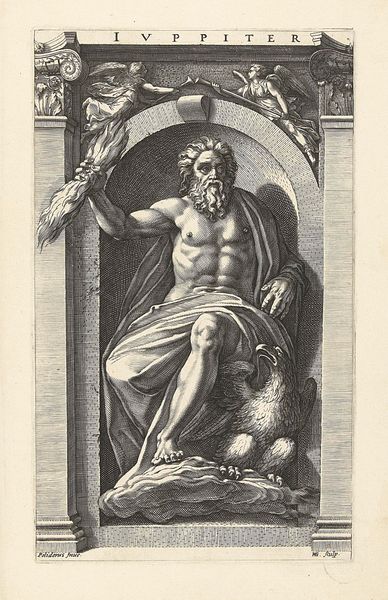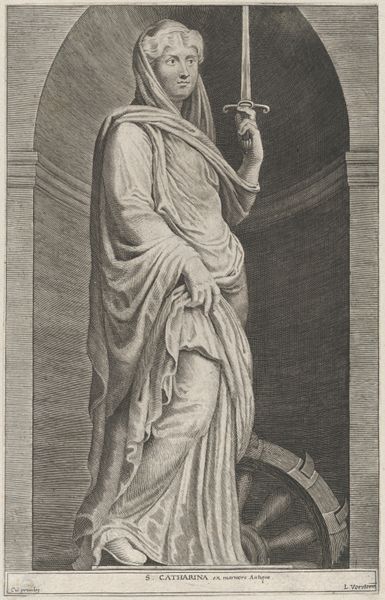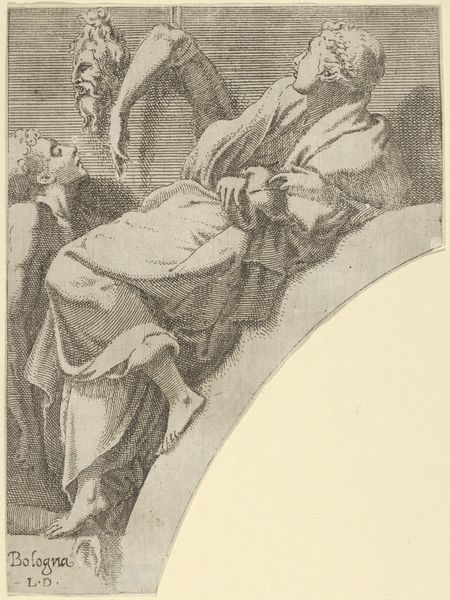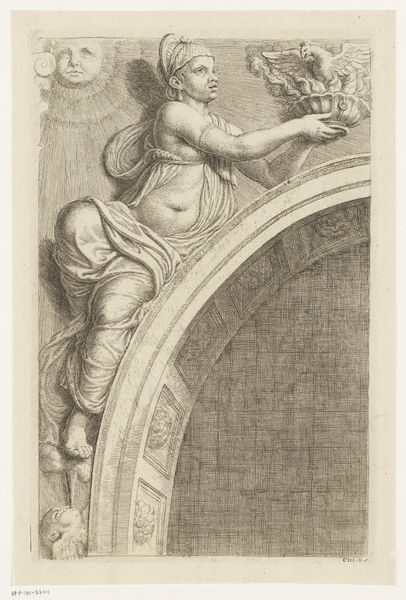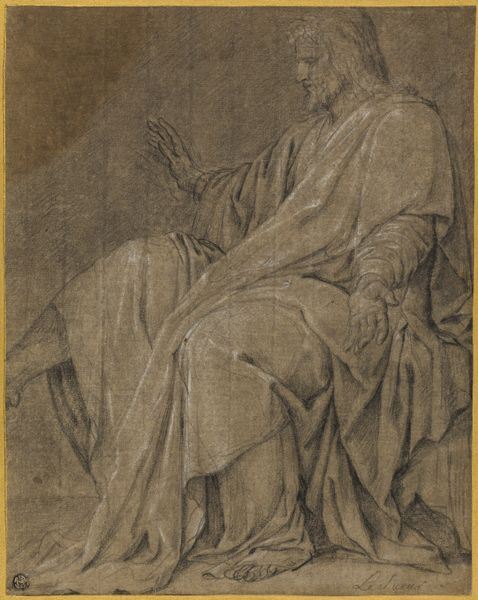
drawing, print, etching, intaglio, engraving
#
portrait
#
pencil drawn
#
drawing
# print
#
etching
#
intaglio
#
figuration
#
11_renaissance
#
pencil drawing
#
engraving
Dimensions: Sheet (trimmed): 8 9/16 in. × 7 in. (21.7 × 17.8 cm)
Copyright: Public Domain
Curator: Here we have “Thalia, from “Twelve Muses and Goddesses,” created circa 1535-1550 by Léon Davent. This intaglio print presents Thalia in a serene, almost languid pose. Editor: My initial impression is one of stillness, a contemplative mood. The fine lines create a soft, almost hazy atmosphere around her, though the medium is surprisingly linear and crisp. It's fascinating. Curator: Absolutely. As a print, likely an engraving or etching, it reveals the early Renaissance interest in classical subjects filtered through the printmaking technology of the time. Notice how the parallel lines define form and shadow, a technique common in engravings, influencing how knowledge was spread. These prints circulated widely, allowing for accessibility of classical knowledge. Editor: The way Thalia is draped feels deliberate; she’s poised but seemingly accessible, embodying not just artistic inspiration, but perhaps highlighting performative arts in society. Considering women were largely excluded, to what degree were interpretations affected by this? The work itself, I mean, not Thalia the muse! Curator: Precisely. Her somewhat idealized features tie into the broader artistic and philosophical currents, reviving antiquity as well as serving a role within society by upholding these models and ideals, so its function isn’t divorced from cultural power and the history embedded there. Editor: Do you think the print's circulation democratized knowledge, or did it solidify the power structures by circulating specific, idealized representations? Curator: It's both. The circulation allowed broader audiences to engage with classical ideas and imagery but was clearly curated. Consider also who had access to these prints and the literacy to understand the imagery. It presents a complexity. Editor: The fact that it survived this long also illustrates our complex and often incomplete history. We continue the work of reimagining her potential influence today, pushing towards a larger conversation about access and authority. Curator: Ultimately, considering the material of “Thalia” and what survives means so much, doesn’t it? We're left pondering the multiple layers of influence at play. Editor: Agreed, there’s just so much richness layered into her representation across time that one viewing can’t fully access!
Comments
No comments
Be the first to comment and join the conversation on the ultimate creative platform.

